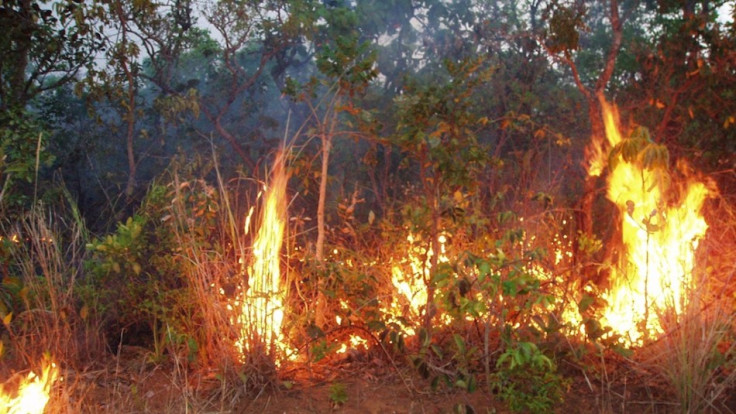Nasa's First Formal Prediction Calls for Milder Amazon Fires in 2012

Nasa expects less wildfires in the Amazon Basin in 2012, according to its first formal prediction on the Amazon fire season.
The prediction was made based on a new fire severity model developed by university and Nasa researchers. The model predicts that although there will be fires in the Amazon, they won't be as likely in 2012 as in some previous years.
Fire season across most of the Amazon rain forest typically begins in May, peaks in September and ends in January. The new model, which forecasts the fire season's severity from three to nine months in advance, calls for an average or below-average fire season this year within 10 regions spanning three countries; Bolivia, Brazil and Peru.
"Tests of the model suggested that predictions should be possible before fire activity begins in earnest," stated Doug Morton, a co-investigator on the project at Nasa's Goddard Space Flight Center.
"This is the first year to stand behind the model and make an experimental forecast, taking a step from the scientific arena to share this information with forest managers, policy makers, and the public alike," Morton added.
The model was first described in the journal Science in 2011. Comparing nine years of fire data from Nasa's Moderate Resolution Imaging Spectroradiometer (MODIS) on the Terra satellite along with a record of sea surface temperatures from Nationa Oceanic and Atmospheric Administration (NOAA), scientists established a connection between sea surface temperatures in the Pacific and Atlantic oceans and fire activity in South America.
Specifically, sea surface temperatures in the Central Pacific and North Atlantic are currently cooler than normal. Cool sea surface temperatures change patterns of atmospheric circulation and increase rainfall across the southern Amazon in the months leading up to the fire season.
"We believe the precipitation pattern during the end of the wet season is very important because this is when soils are replenished with water," said Yang Chen of UC Irvine.
Nasa mentions that without sufficient water to be transported from the soil to the atmosphere by trees, humidity decreases and vegetation is more likely to burn. Such was the case in 2010, when above-average sea surface temperatures and drought led to a severe fire season. In 2011, conditions shifted and cooler sea surface temperatures and sufficient rainfall resulted in fewer fires, similar to the forecast for 2012.
Building on previous research, the researchers said there is potential to adapt and apply the model to other locations where large-scale climate conditions are a good indicator of the impending fire season, such as Indonesia and the United States.
© Copyright IBTimes 2024. All rights reserved.





